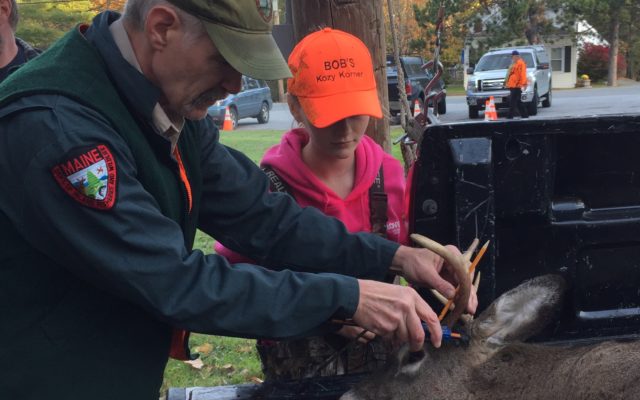
These tips will help you fill your deer tag
You’ve been busy, and haven’t had the chance to spend any time in the woods. Now, here we are a few days before the beginning of deer season, and you realize exactly how far behind the eight ball you are. You haven’t scouted. You don’t have any stands up. You don’t have a plan for Saturday’s residents-only deer season opener.
Luckily, a lack of advance preparation needn’t spoil your whole season. In fact, there are a few tactics you might consider to tip the balance in your favor.
“Deer hunting is all about habitat,” said Lee Kantar, an avid deer hunter and former deer biologist who now serves as the state’s top moose biologist. “That’s what you’ve got to key in on. What’s deer habitat this time of year, and where are they going to be?”
Kantar explained that deer are known as “edge” species, in that they tend to flourish in the transition spaces between, say, a forest and a field. This year, with so much natural food in the woods, deer might not be so apt to wander into those fields, and might be targeting acorns instead.
“Maybe these deer are on those hardwood ridges and places where the food is a little bit more [abundant] than they’ve been in the past because it’s such a big year for acorns,” he said.
Nathan Bieber, the Maine Department of Inland Fisheries and Wildlife’s deer biologist, said one crucial first step should precede any hunting.
“If a hunter is eyeing up a spot and they haven’t contacted that landowner, that’s something they should do,” Bieber said. “Better late than never, and developing that kind of cooperative relationship with a landowner makes it more likely that their land will be available to hunt in the future.”
Among Bieber’s other tips:
Practice, practice, practice.
“Spend some time at the shooting range,” he said. “Knowing where the deer are isn’t that helpful if you can’t make a good shot.”
Don’t be too proud to ask for help.
“If you have permission to hunt an area but haven’t scouted it much, ask the landowner what they’re seeing and what areas they might recommend,” Bieber said.
Get back to the basics.
“‘Still hunting’ can be an effective way to kind of scout and hunt at the same time. Still hunting just involves slowly stalking through an area stopping now and then to watch and wait,” Bieber said. “You might just quietly walk 100 yards, stand up against a tree for 15 minutes, creep along another 100 yards and wait again. This way you’re hunting in a way that isn’t disturbing everything around and scouting what’s in the area.”
Other tips that could pay off, according to Kantar:
It’s never too late to start learning about the land you’re hunting.
“Depending on how much time you have to go out, have the mindset that you’re actually going to scout while you’re deer hunting,” Kantar said.
Take advantage of technology.
“These days with Google Earth and all that type of stuff people can do a lot of homework in one evening [at their computer],” Kantar said. “You could Google ‘Northeast hunting’ and start looking at Google Earth and pick out some places right there.”
Among the resources one might find online: Areas where the public is welcome to hunt due to conservation easements and agreements.
Concentrate on food sources that you find.
“Obviously, this year is a big food year. We have acorns and we have beechnuts. We have apples,” Kantar said. “[Focusing on those areas is] obviously something that would kind of be a first step.”
And one more tip:
Finally, a piece of advice from a guy (me) who has never filled his tag, but who knows plenty of people who have.
Just get out there.
Unless you’re like a co-worker of mine who accidentally “harvests” a deer or three each year while he’s driving his truck back and forth between Bangor and Belfast, you’re not going to have any luck putting venison in the freezer unless you actually get into the woods.
And the more often you head out, the better your odds will get.
You can take that advice to the bank.